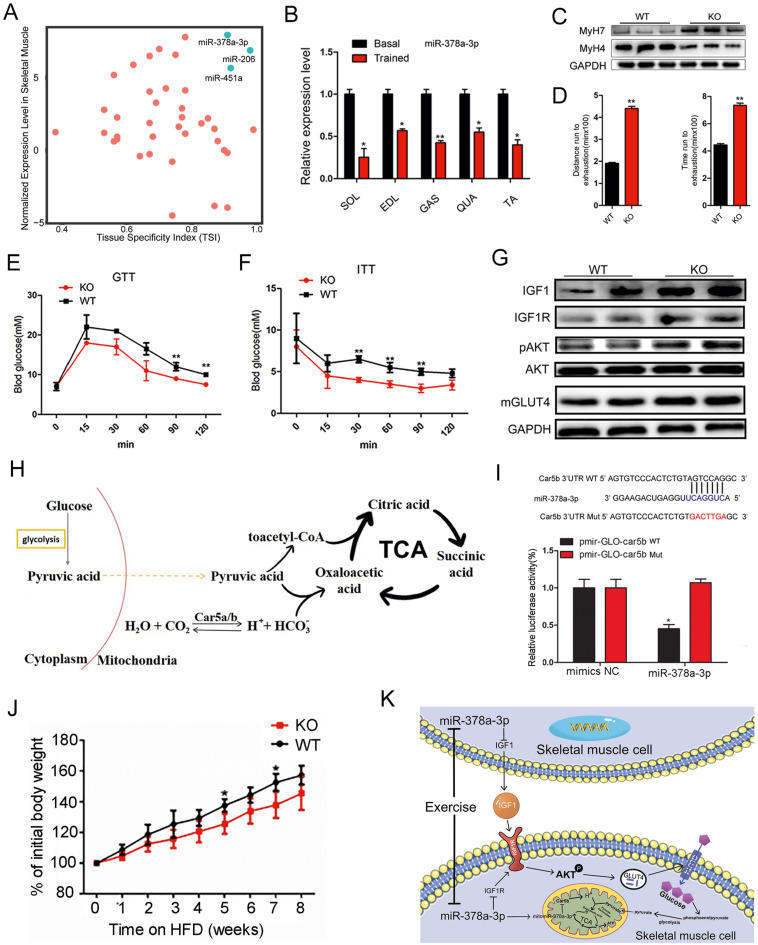
miR-378a-3p responds to physical activity by modulating insulin-mediated glucose uptake and tricarboxylic acid cycle in skeletal muscle


Aerobic exercise training alters gene expression in skeletal muscle, and miRNAs significantly contribute to motion response. However, the molecular mechanisms by which miRNAs regulate the response to exercise training are not well understood. Here, we found that the abundance of miR-378a-3p in skeletal muscle significantly decreased after exercise training. miR-378a-3p knockout mice showed increased insulin sensitivity, insulin-mediated glucose uptake, and an oxidative phenotype, recapitulating the role of miR-378a-3p in exercise-induced adaptations of skeletal muscle. Mechanistically, miR-378a-3p modulates insulin-mediated glucose uptake through the IGF1/IGF1R-AKT-GLUT4 axis by targeting Igf1r and Igf1. Additionally, loss of miR-378a-3p promotes the tricarboxylic acid (TCA) cycle by promoting the process of oxaloacetic acid synthesis by targeting Car5b. Moreover, deletion of miR-378a-3p alleviates obesity and improves glucose metabolism in mice fed a high-fat diet, suggesting its potential as a therapeutic target for metabolic diseases. Overall, our findings highlight the crucial role of miR-378a-3p in regulating insulin-mediated glucose uptake and TCA cycling in skeletal muscle, offering promising therapeutic implications for metabolic diseases.
